|
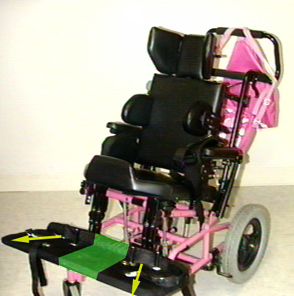 Let's look at some chair details. Let's look at some chair details.
A footboard shows the plan for feet pointing outward when knees are apart (as they ought
to be). But if standing from the chair is impeded by a board, then simply changing the lock point for regular foot rest swing out attachment does the same thing. Cost = 1 drill hole.
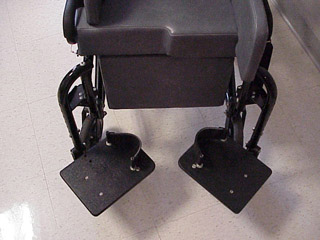
Here the foot rests click to lock with the feet not together.
Because of prior surgery which resulted in a shorter right thigh, the seat is offset in scale.

Hurty tail bones are especially troublesome when the youngster is skinny, and many are.
The underdeveloped gluteus maximus leaves the tail bone (coccyx) without any cover and very prone to pressure problems. It is NOT just downward that pressure is felt. It is also from
behind. U-shaped cut out of both the back rest and seat usually solve the pressure problem. Many cushions fail because the pressure from the seat back lower edge is not considered.
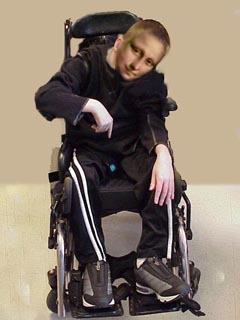
The side supports should SELDOM be at the same height.
Unless they are broad and able to cinch down like a vise, that configuration does nothing. In New Jersey, people wear clothing. No, really. They do. And, that clothing is very thick and in layers in the winter and
next to nothing in the summer. So, how can a pair of side things work?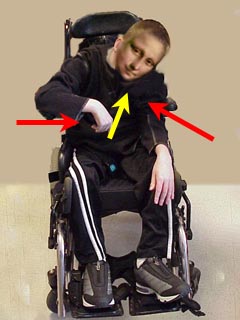
If you know that the youngster tends to lean to the left, then set the left side support very high. Right up
to the axilla (armpit). The right side thorax (chest) support should be at mid chest at the apex of the bend. Make them narrow as they don't squeeze when offset, but steer.
For some kids, leaning the chair too far backward makes them pull forward and defeat both head rest
and side chest supports. Know your kid.
Consider tendency to arm posture. Does it contribute to leaning (and to scoliosis)?
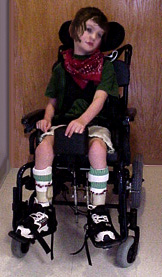 <= OK. Here is a chair we like. <= OK. Here is a chair we like.
Notice that the feet, although apart, do not widen the chair base nor the doorway clearance. Notice that when knees are
apart (and they are apart, not just thigh flesh squashed) that the feet point outward.
This is a comfortable posture and it is hip friendly. See below.
The sides or thigh guards are NOT parallel. They narrow at the back to center the tush.
However, they widen forward to allow legs to be mildly abducted. When knees are apart and the feet are together the hips get badly twisted. Feet normally point about 15 degrees
further outward than the direction of knees. So, even when (yuk) knees are pointing forward, even then, feet should not also point forward.
Forward pointing feet is called punishment. The immediate cost of getting it right is no
more than getting it wrong and maybe over the long run a whole bunch less if it prevents hip problems.
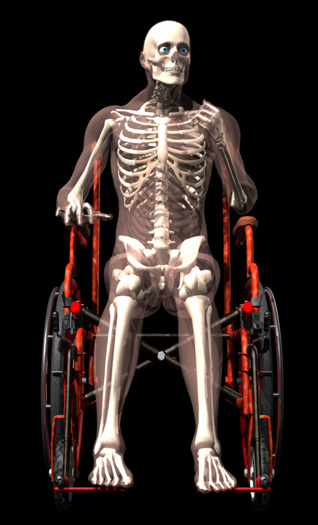
|
Dr Nuzzo adds his bit.
Look at this seated posture. All muscles running up the thigh attaching to the pelvis pull in parallel and make
a considerable combined force directly backward. If both knees were rammed into a wall the thrust up the femurs would be similar.
|
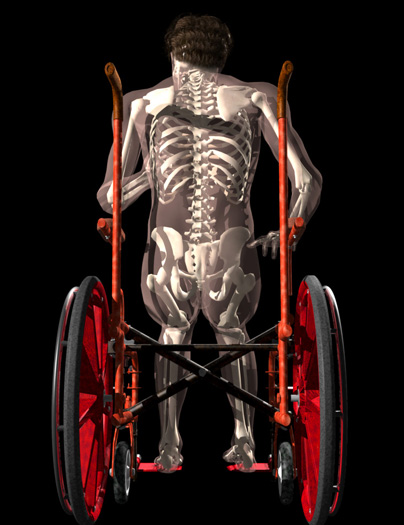
|
From behind we see just how uncovered the upper end of the femur is in this posture for this combined muscular force.
Even a good hip is only
partly covered in this position. Worse, the combined forces are directed to the socket edges which are not even bone, but rather soft and plastic cartilage.
In this posture the sleeve of thigh muscles in a tight person is working to damage and even destroy hip shape - then, from
that, stability.
|
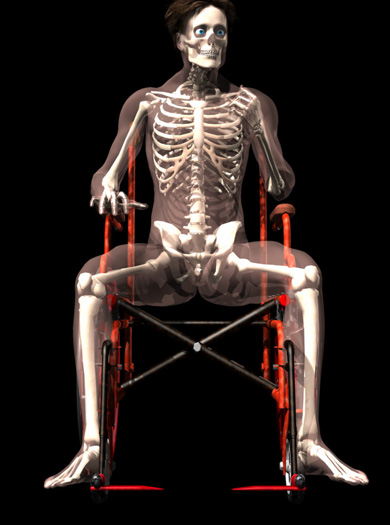
|
Come on. Really! How easy is this?
Merely widening the space between the knees generates linear forces that seek to keep the ball in the socket
|
|
You do see this, right? Seating nicely versus levering out? Why is this controversial?
|
|
|
In the better position, seen above, the calves want to press against the foot rest
uprights. So, those uprights need to be angled out. The green arrow shows the preferred force whereas the red shows the typical force in a forward
seated individual.
|
|
|
Above, the gray vertical pipe is the preferred position for an upright to attach
a foot rest. When slung from here, it easily swings the supports out of the way of the calf and ankle. Also note that the wider foot positioning
>>> DOES NOT <<< increase the width of the chair nor the chair traveling space.
|
|
|

